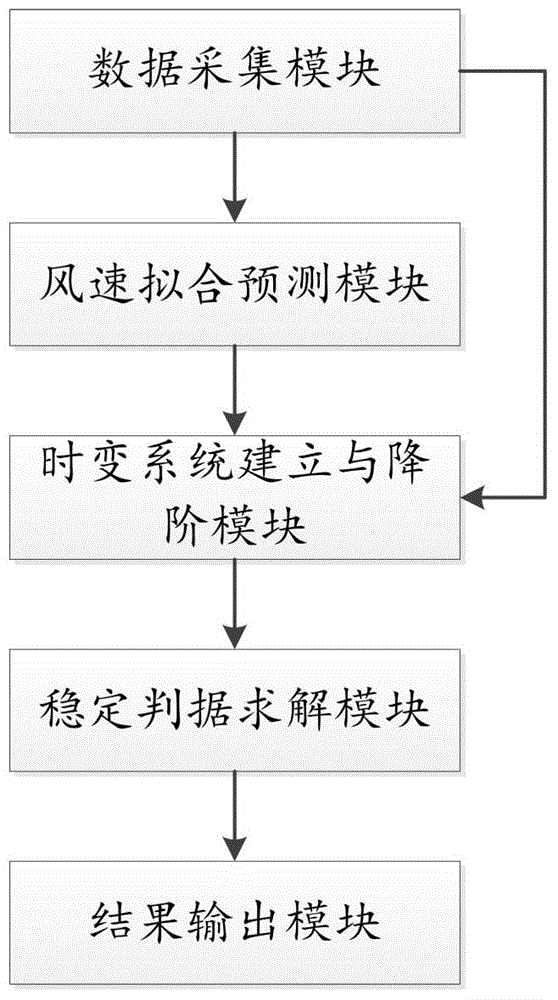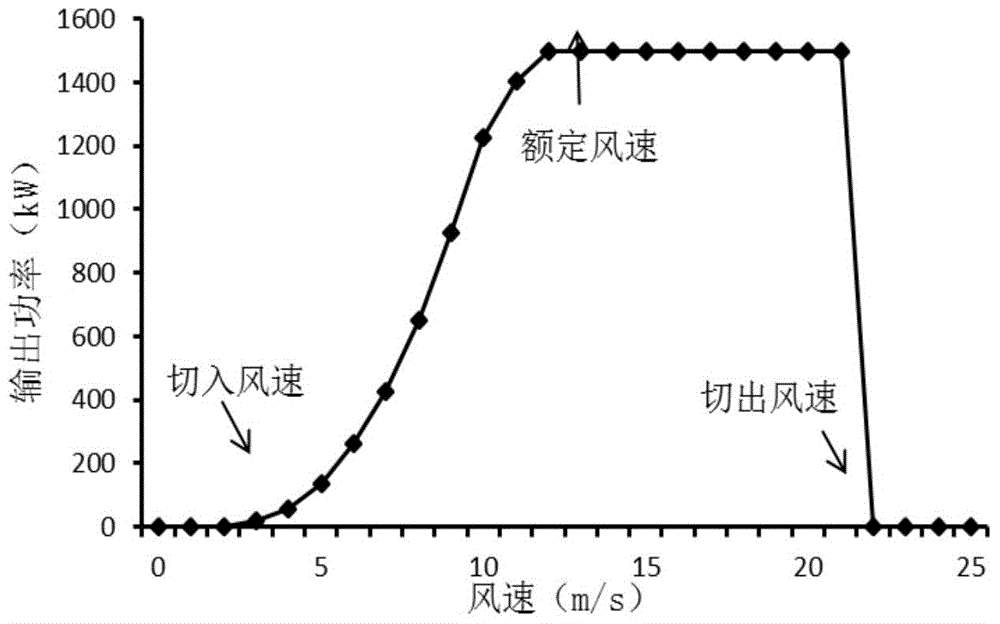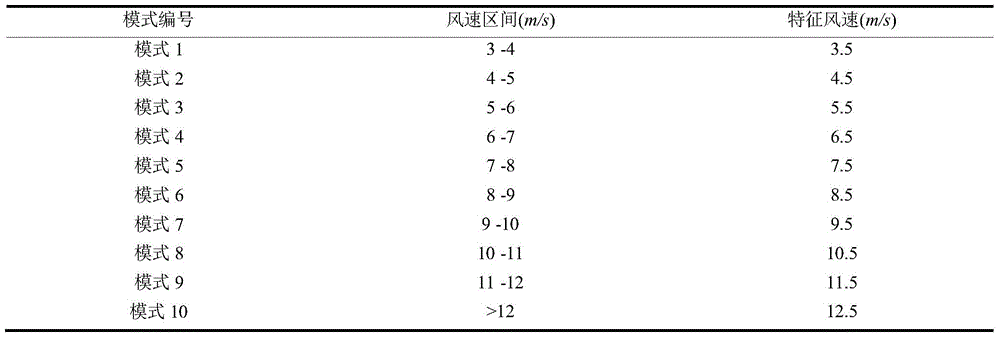Stability analysis system and method of time-varying power system
A power system and time-varying system technology, which is applied in the fields of climate change adaptation, electrical digital data processing, and special data processing applications, and can solve problems such as ignoring the stability of the power system on the grid side of wind turbines
- Summary
- Abstract
- Description
- Claims
- Application Information
AI Technical Summary
Problems solved by technology
Method used
Image
Examples
example 1
[0239] Taking the measured wind speed data of a wind farm within one month as an example, the cut-in wind speed is 3m / s, the rated wind speed is 12m / s, and the cut-out wind speed is 22m / s. The output power curve of the fan is as follows: figure 2 shown. Divide the wind speed into 10 modes with 1m / s as the interval width to form a continuous Markov model state set, denoted as S={1,2,…,10}, and the information of each mode is in image 3 given in.
[0240] according to image 3 In the mode division, the Weibull distribution is fitted to the conditional wind speed probability density curve in each wind speed mode, and the fitting results are as follows Figure 4 shown. according to Figure 4 According to formula (1), the wind speed probability density matrix of each condition is obtained as shown in formula (28).
[0241] build as Figure 5 The shown IEEE4 machine 11 node system, the system includes two areas, area 1 and area 2, where generator 1 and generator 2 are locate...
example 2
[0248] build as Figure 8 The shown IEEE16-machine 68-node system further examines the validity and versatility of the time-varying power system stability analysis method considering the random characteristics of wind speed. The system can be divided into 5 areas, of which areas 1, 2 and 3 are equivalent systems, area 4 is the New York system, area 5 is the New England system, and the generator G16 in area 3 is replaced by a power source of equal capacity Simulate the change of fan output power. The generator adopts 6-order detailed model, the excitation adopts IEEE-DC1 type excitation, the load model adopts WECC load model, 80% of constant active load, 80% of constant reactive impedance load, and 20% of dynamic load.
[0249] First, the SMA method is used to reduce the order of the system state matrix under each working condition, and the reduced system state matrix and the probability density transition matrix shown in Equation (28) are substituted into Equation (27), and t...
PUM
 Login to View More
Login to View More Abstract
Description
Claims
Application Information
 Login to View More
Login to View More - R&D
- Intellectual Property
- Life Sciences
- Materials
- Tech Scout
- Unparalleled Data Quality
- Higher Quality Content
- 60% Fewer Hallucinations
Browse by: Latest US Patents, China's latest patents, Technical Efficacy Thesaurus, Application Domain, Technology Topic, Popular Technical Reports.
© 2025 PatSnap. All rights reserved.Legal|Privacy policy|Modern Slavery Act Transparency Statement|Sitemap|About US| Contact US: help@patsnap.com



